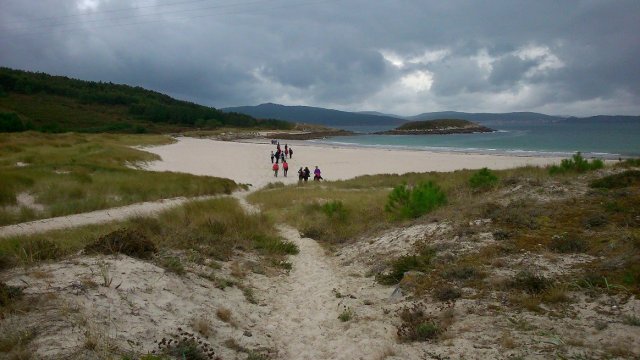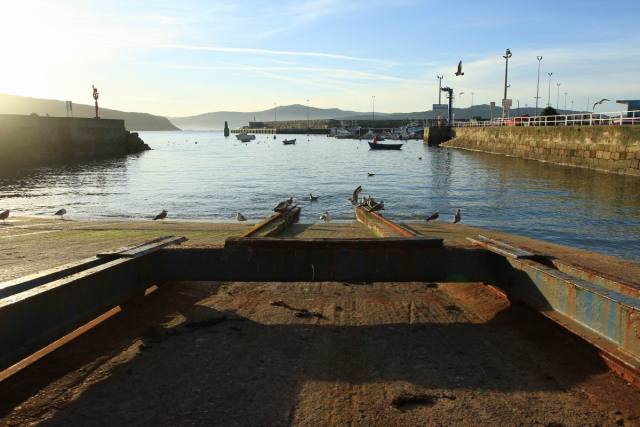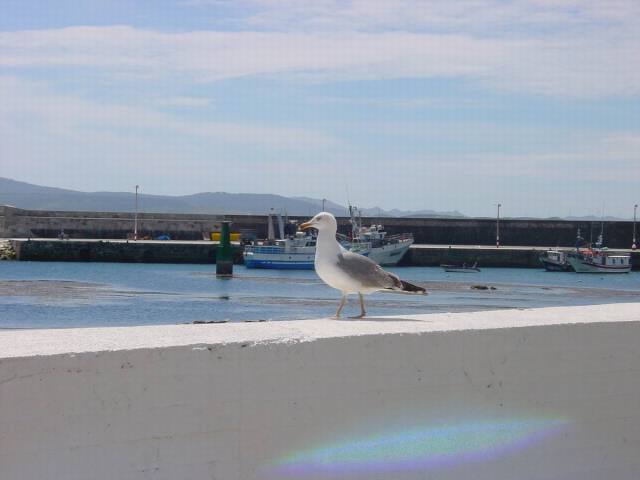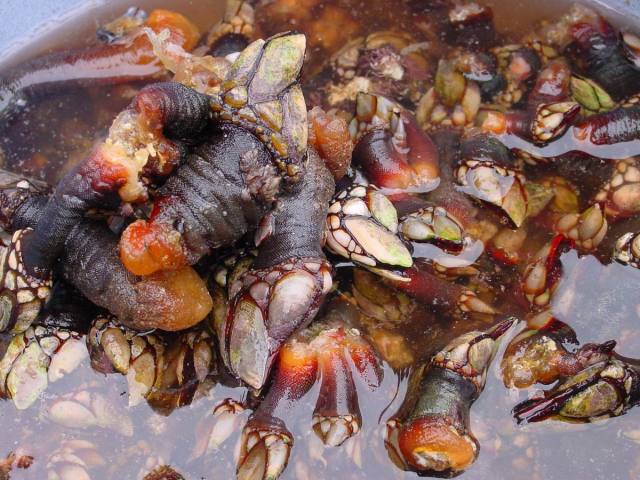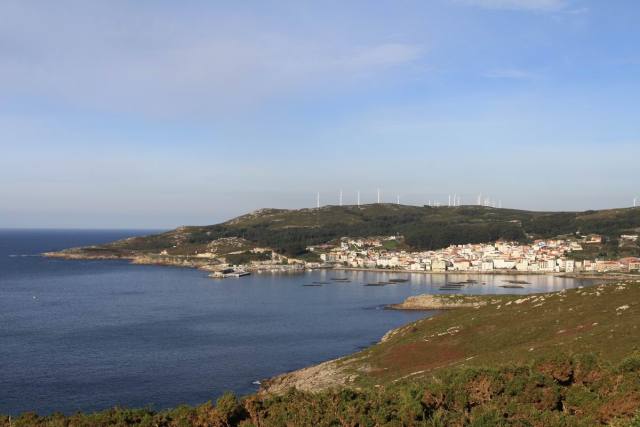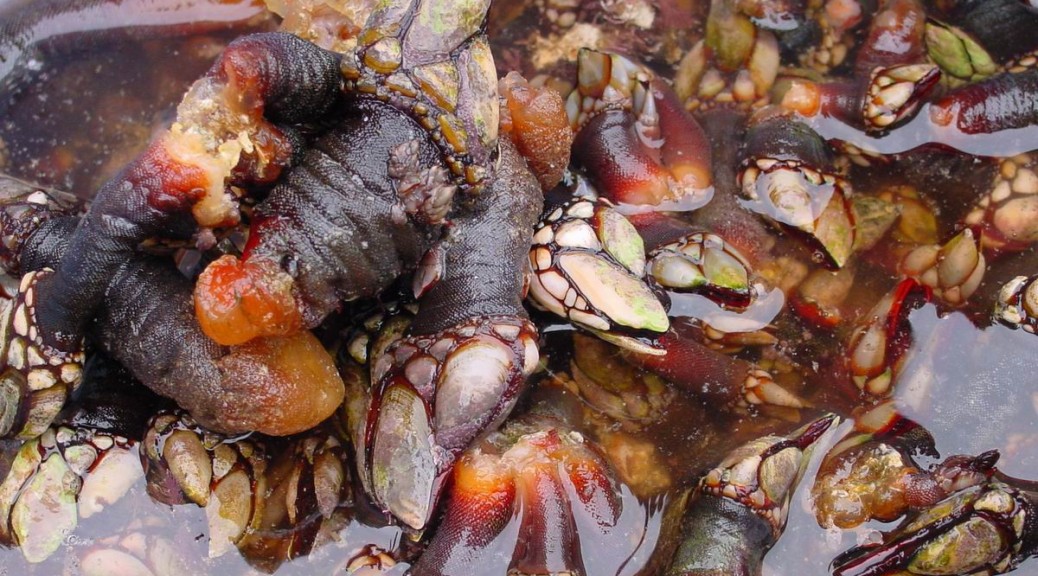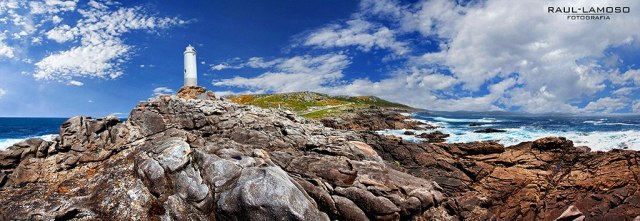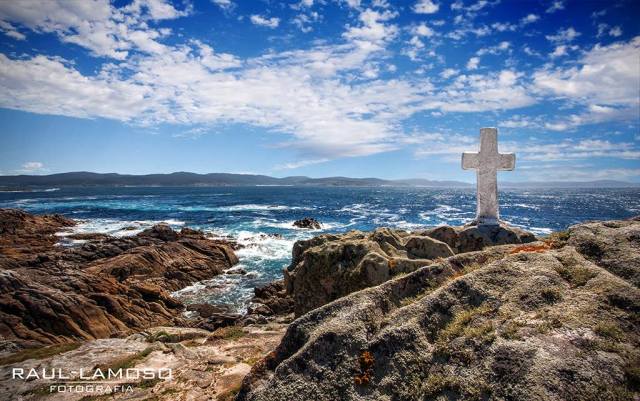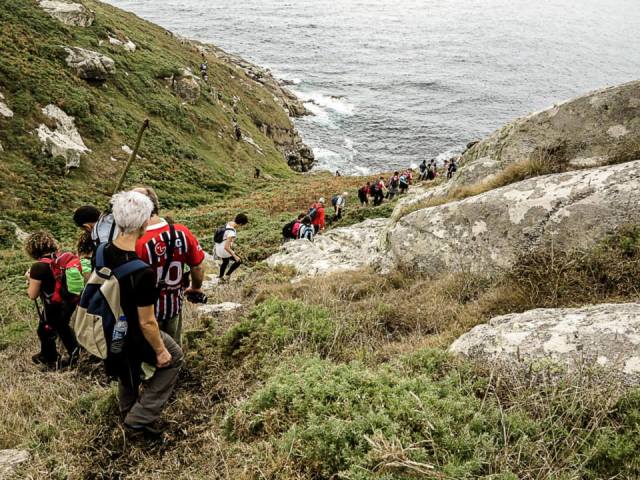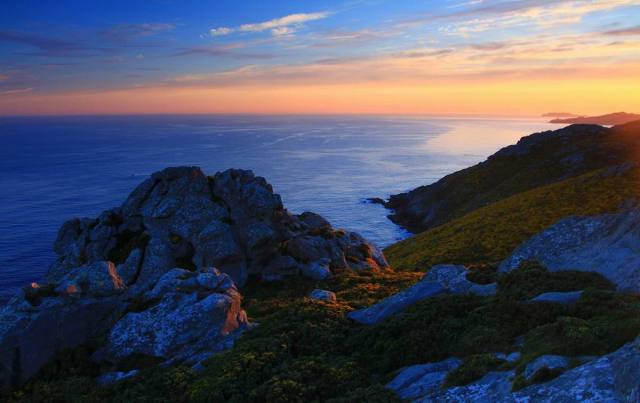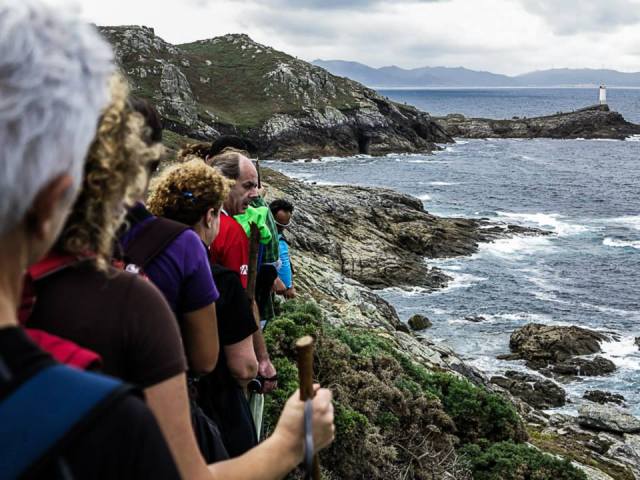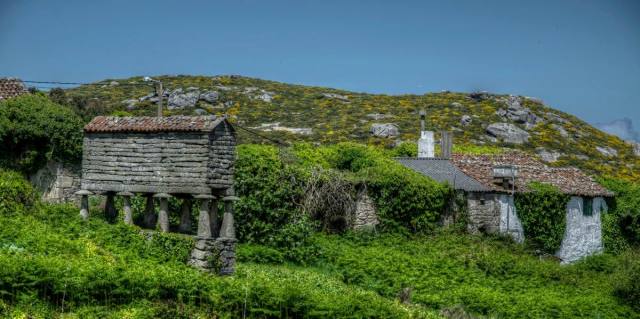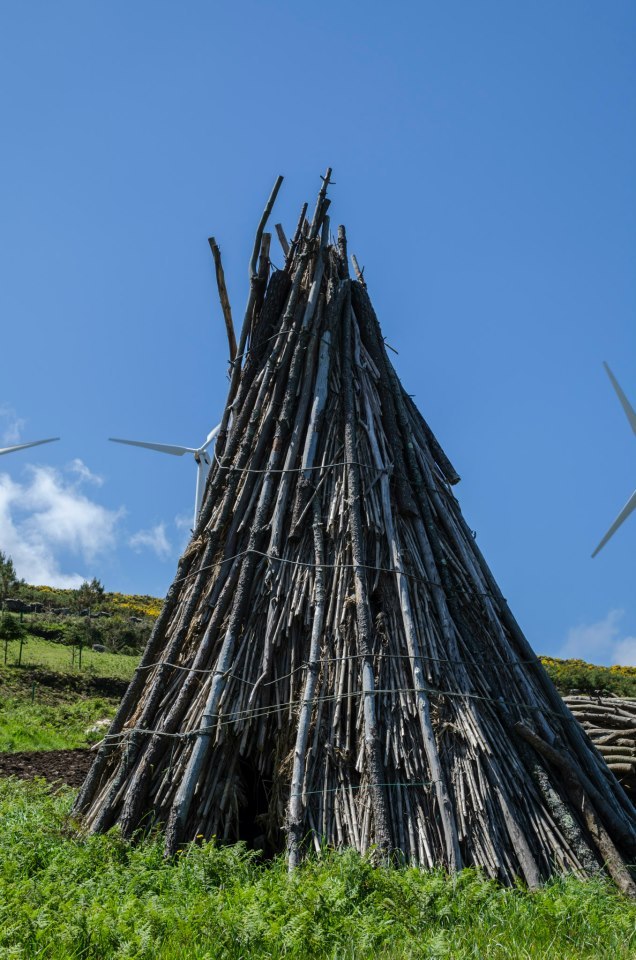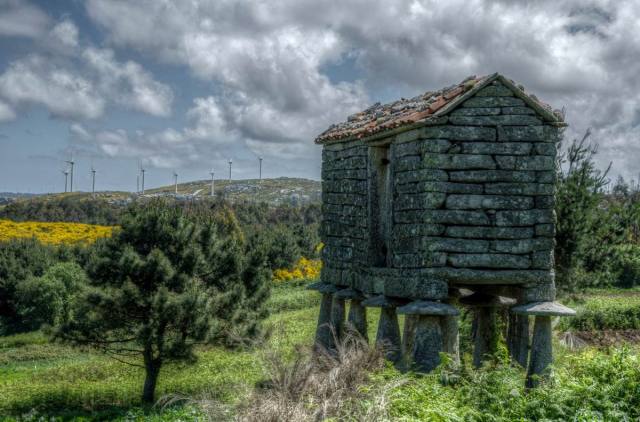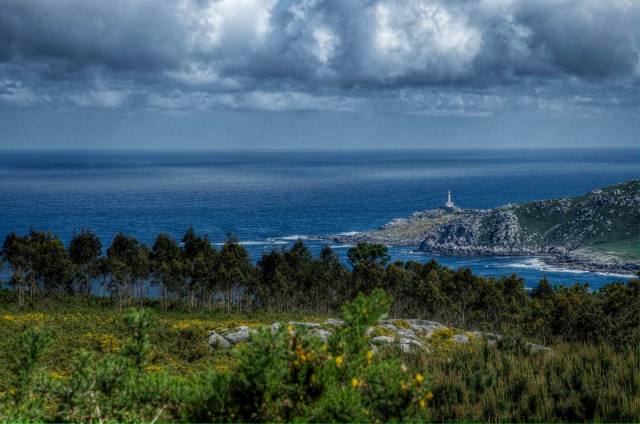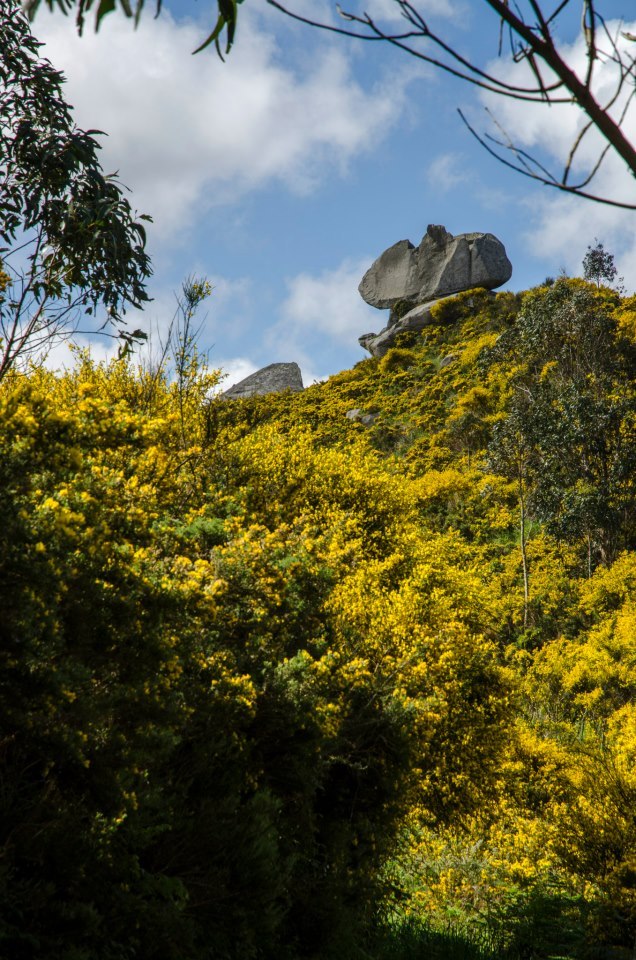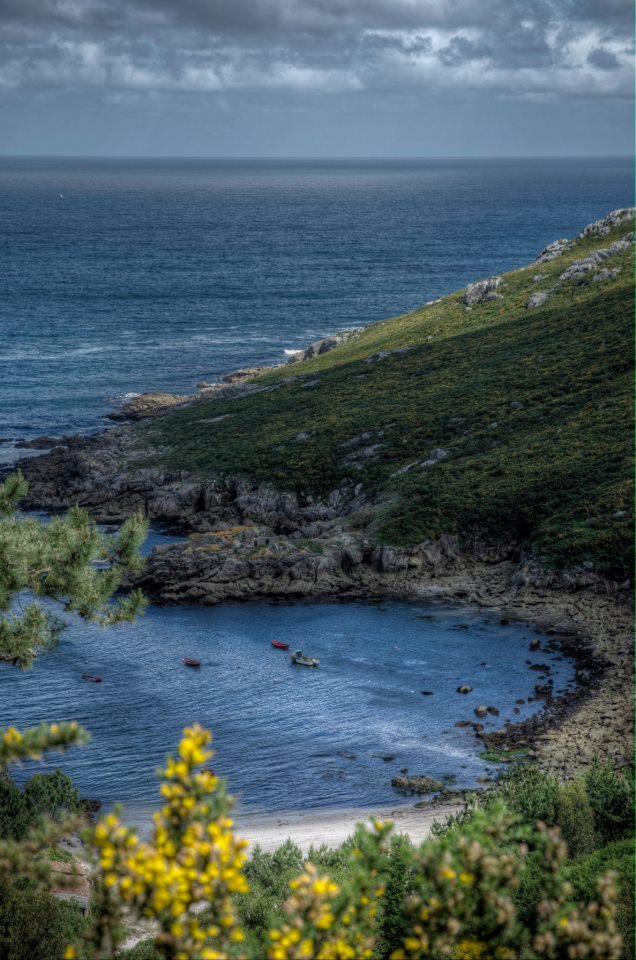We arrive at the fishing port in Corme. Its current calm atmosphere highly contrasts with the buzzing atmosphere back to the beginning of the 20th century, when Corme was acknowledged as the first port exporting wood.
Corme is a land of fishermen, who sailed along all the seas and oceans around the world. Corme may be the village, taking into account its population, that has provided the history of navigation with more ship´s masters.
Apart from the exportation of timber, the fleet was also composed by merchants, “tarrafa” (a type of fishing), and some inshore fishing boats. At that time, there were also some canneries and the increase of the population was really significant, with 2978 inhabitants according to the population census in 1920. However, the civil war and some other factors were the trigger which brought about a crisis in the fishing economy and consequently a decrease in the number of its inhabitants.
Los habitantes de Corme saben muy bien los que es la mar: en la Mercante, en el Gran Sol, en todos los mares del mundo conocen a estos esforzados marineros.
The inhabitants from Corme know very well what the sea means: in the Merchant, in the Gran Sol grounds, these hard-working fishermen are known all over the world.
We said goodbye to Suso saying thank you to him for his companion and all the stories he had told us about Corme. We did, of course, invite him to come with us to enjoy any of the stages of O Camiño dos Faros. Before leaving, Suso suggested us where to have lunch. It was late and high time to taste those gooseneck barnacles from O Roncudo…
There was a couple eating half of a kilo of barnacles. We rushed to get some. Luckily, the couple didn´t realize about it. They were delicious.
At this point of the stage, it can be said that the hardest part has been left behind. From Niñóns to Barda, going up to the Windmill farm and down till the CapeRoncudo had left our legs really sore all over. But after eating the gooseneck barnacles and a 30-minute rest, we were ready to go on.
From this point on, the route is kind of smoother. On the way to Ponteceso, we will see the beaches of Corme, Valarés and its pine tree forest, the mountBlanco and all the estuary of Anllóns. The views of the estuary Corme-Laxe will amaze you for sure.
We leave Corme by taking the path that goes across the beach of Arnela and we will get to the one in Osmo.

















